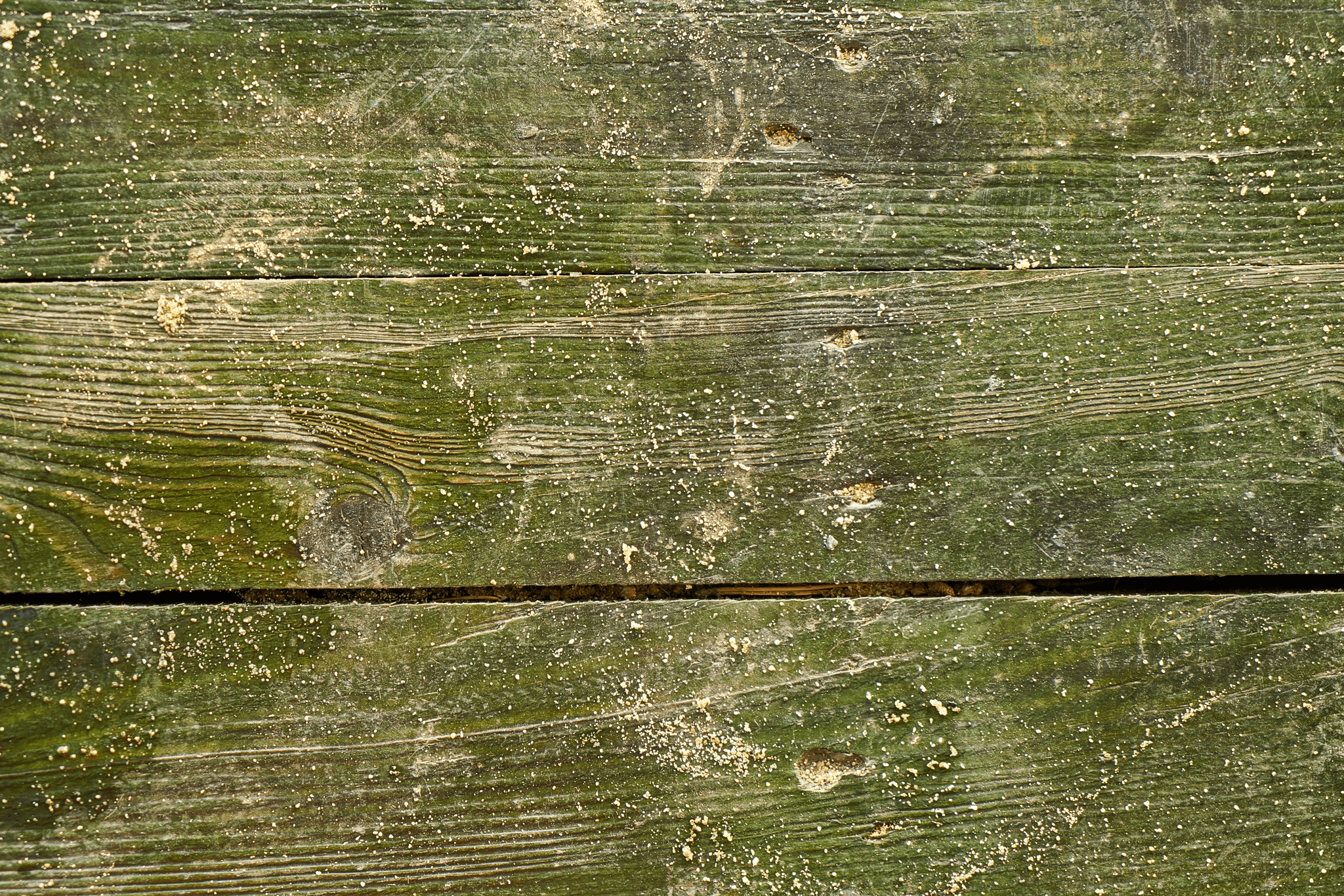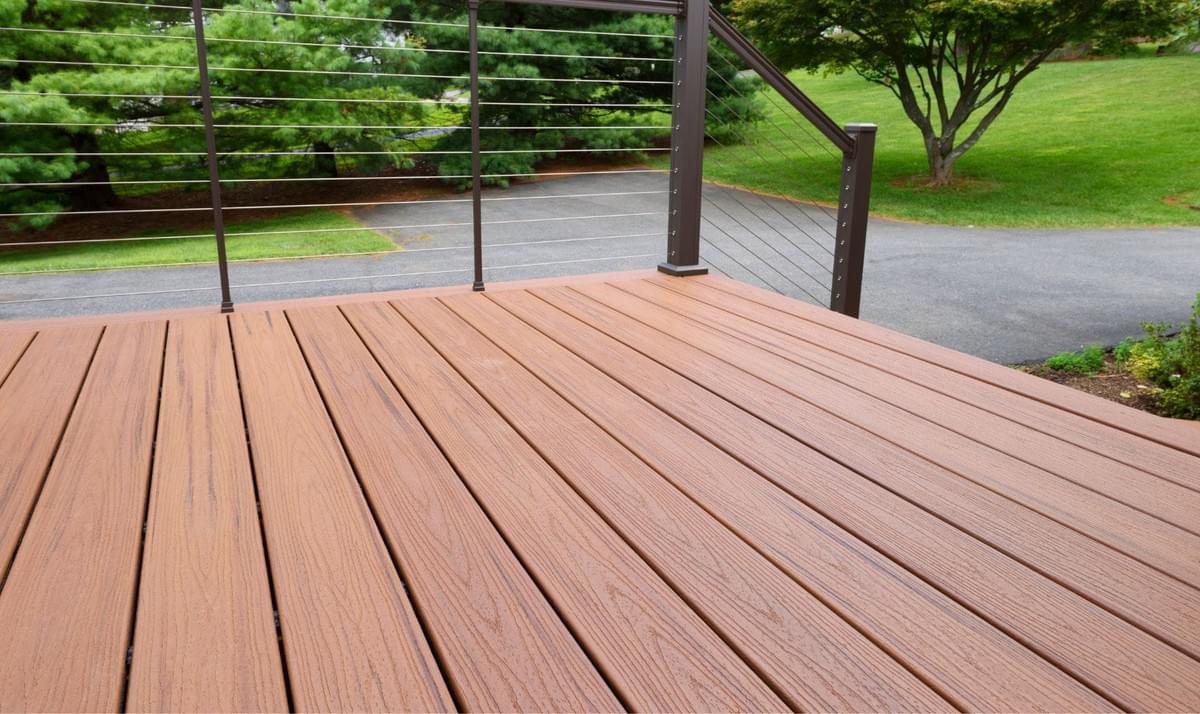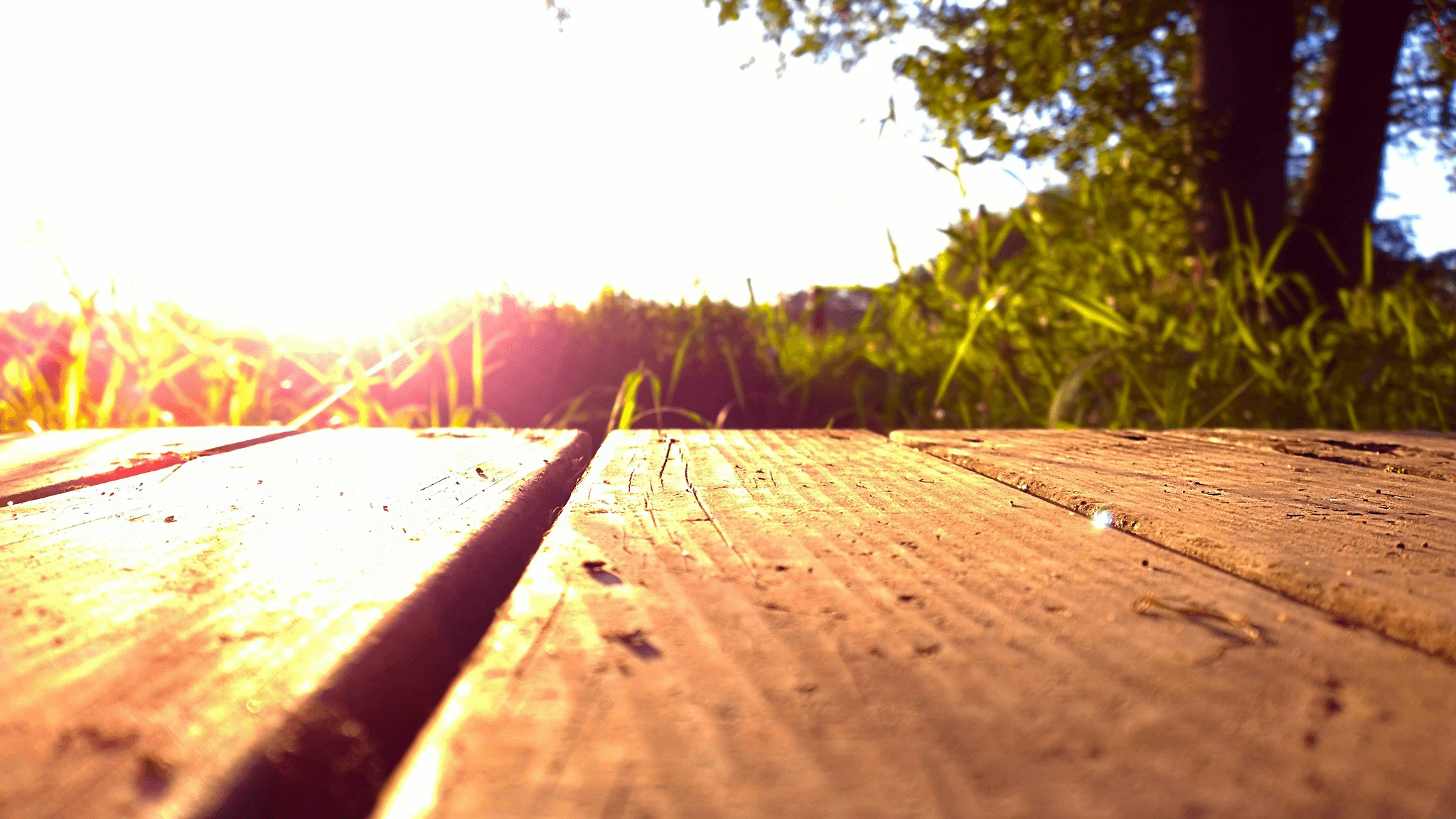Introduction
Mold on your deck can feel like an unwelcome guest that just won’t leave, ruining the beauty of your outdoor space and making it hazardous for family and friends. Understanding the mold challenge is crucial for maintaining a safe and inviting environment. With the right knowledge, you can easily tackle this problem head-on and reclaim your deck.
Understanding the Mold Challenge
Mold thrives in damp environments, making decks—especially those made of wood—a prime target for infestation. Knowing how to remove mold from a deck effectively is essential not only for aesthetics but also for safety, as it can pose health risks if left untreated. The challenge lies in identifying the type of mold present and understanding its growth conditions to implement effective solutions.
Importance of Deck Maintenance
Regular maintenance is key to preventing mold growth on your deck. Neglecting this aspect can lead to significant issues down the line, including costly repairs or complete replacement of decking materials. By investing time in routine cleaning and upkeep, you not only enhance your outdoor space's appearance but also extend its lifespan.
Overview of Effective Solutions
When it comes to tackling mold, knowing what works best is half the battle won. Many homeowners wonder if vinegar kills mold on decks; indeed, it's a natural solution worth considering alongside other options like specialized cleaners designed for this purpose—after all, finding the best deck cleaner for mold and mildew makes all the difference! Additionally, understanding how to remove mildew from stained decks or algae from decking quickly will ensure that your outdoor area remains clean and enjoyable year-round.
Identifying Mold Types

Mold can be a pesky problem for deck owners, but knowing how to identify it is the first step toward effective removal. Understanding the different types of mold that thrive on decks, recognizing the signs of infestation, and knowing why these fungi flourish in moist environments are key components in tackling this issue. Let’s dive into the world of mold and get you equipped to handle it like a pro.
Common Mold Species on Decks
When it comes to decks, several common mold species might take up residence if conditions are right. Among these, black mold (Stachybotrys chartarum) is notorious for its dark appearance and potential health risks. Other culprits include green mold (Chlorociboria aeruginosa), which can create unsightly patches, and white mold (Sclerotinia sclerotiorum), known for its fluffy texture—each presenting unique challenges when you’re figuring out how to remove mold from your deck.
Understanding these species not only helps in identifying them but also informs your approach to cleaning. For instance, using vinegar has been shown to be effective against many types of mold; does vinegar kill mold on decks? Absolutely! With the right cleaning solutions at hand, you can tackle these unwelcome guests effectively.
Signs of Mold Infestation
Detecting a mold infestation early can save you from more significant headaches down the line. Look out for discoloration on your deck surface—black or green spots often indicate a presence of mold or mildew. Additionally, if you notice a musty smell that seems to linger around your outdoor space, it's likely time to investigate further; this could mean you're dealing with mildew or even algae buildup.
If you're unsure whether what you're seeing is indeed mold or just dirt accumulation, consider conducting a simple test: apply some water and see if it beads up or soaks in; if it beads up, you've got some kind of growth going on! Knowing how to remove mildew from stained decks is also crucial since discoloration can ruin your deck's aesthetic appeal over time.
Why Mold Thrives in Moist Environments
Mold loves moisture—it’s practically its best friend! Decks that are frequently damp due to rain exposure or poor drainage systems create ideal conditions for various types of fungi to flourish. The organic materials found in wood decking provide additional nutrients that allow molds like black and green varieties to thrive unchecked.
To prevent this unwanted growth from taking hold, regular maintenance is essential; keeping your deck clean and dry will make all the difference! Seasonal tips for maintaining dryness include ensuring proper drainage away from your deck and utilizing high-quality materials from Composite Decking Inc that resist moisture absorption better than traditional wood options.
Essential Tools and Materials
When tackling the issue of mold on your deck, having the right tools and materials is crucial for effective removal. Whether you're wondering how to remove mold from a deck or seeking the best deck cleaner for mold and mildew, being prepared can make all the difference in your cleaning efforts. In this section, we’ll explore essential cleaning solutions, recommended equipment, and necessary safety gear to ensure a successful mold-removal process.
Cleaning Solutions for Mold Removal
Choosing an effective cleaning solution is key when learning how to remove mildew from a stained deck or eliminate algae buildup. Many homeowners ask, Does vinegar kill mold on decks? The answer is yes—white vinegar is a natural option that can effectively kill up to 82% of mold species. For tougher infestations, consider commercial cleaners specifically designed for decking materials; products containing sodium hypochlorite or oxygen bleach are often touted as the best deck cleaner for mold and mildew.
In addition to vinegar and commercial products, you might also explore eco-friendly options that are safe for both your family and the environment. These biodegradable cleaners often utilize plant-based ingredients that not only combat mold but also help protect your deck's finish. Always read labels carefully to ensure compatibility with your specific decking material.
Recommended Cleaning Equipment
Once you've selected your cleaning solution, it's time to gather the right equipment to facilitate an efficient cleanup process. A stiff-bristle brush will be essential for scrubbing away stubborn mold patches—especially if you're dealing with textured surfaces where algae can hide out. If you're looking for the fastest way to remove algae from decking, consider using a pressure washer; just be cautious with settings so you don’t damage your boards.
Safety Gear for Mold Cleanup
Cleaning up mold can be hazardous if proper precautions aren't taken—so don’t skimp on safety gear! At minimum, wear gloves and goggles while working with any chemical solutions; this protects both your skin and eyes from potential irritation or harm during cleanup efforts. If you're sensitive or allergic to molds, consider wearing a mask rated N95 or higher—this helps filter out airborne spores as you scrub away.
Another important aspect of safety gear includes protective clothing; old long-sleeved shirts and pants can shield against splashes from cleaners while keeping you comfortable during hot days outside. Also remember that adequate ventilation is key when using strong chemicals—open windows nearby if possible or work outdoors when conditions allow it!
By equipping yourself with these essential tools and materials before diving into cleanup efforts at Composite Decking Inc., you'll find that removing unwanted guests like mold becomes much more manageable—and maybe even enjoyable!
Step-by-Step Mold Removal Process
Removing mold from your deck can seem daunting, but with the right approach, it becomes a manageable task. This section will guide you through the essential steps needed to effectively tackle mold and mildew, ensuring your outdoor space remains inviting and safe. Let’s dive into how to remove mold from deck surfaces without breaking a sweat.
Preparing Your Deck for Cleaning
Before you start the actual cleaning process, preparation is key to ensuring effective mold removal. Begin by removing any furniture, planters, or decorations from the deck area; this will provide you with a clear workspace and prevent any damage to your belongings. Next, sweep away loose debris like leaves or dirt—this not only helps in identifying areas of heavy infestation but also allows cleaning solutions to reach the wood or composite surface more effectively.
Once you've cleared the area, inspect your deck for signs of damage that may need attention before applying any cleaning solutions. If there are cracks or splintered boards, consider repairing these spots first; after all, what's the use of cleaning if your deck is falling apart? Lastly, ensure that you’re equipped with safety gear such as gloves and goggles—after all, we want you safe while tackling those pesky spores!
Applying Cleaning Solutions Effectively
Now that your deck is prepped and ready for action, it's time to apply cleaning solutions designed specifically for mold removal. One commonly asked question is: does vinegar kill mold on decks? The answer is yes! Vinegar can be an effective natural solution when applied directly onto affected areas; just let it sit for about 30 minutes before scrubbing away.
However, if you're looking for something stronger or faster acting than vinegar alone, consider investing in the best deck cleaner for mold and mildew available at stores or online retailers. These products typically contain powerful ingredients that break down stubborn mold while being safe for most decking materials—just follow manufacturer instructions closely! Use a stiff-bristled brush to scrub away visible mold spots thoroughly; don’t forget those hard-to-reach corners where algae often hide.
Rinsing and Drying Techniques
After you've diligently scrubbed away at the moldy patches on your deck using effective cleaners or vinegar solutions, rinsing off residual product is crucial to achieve optimal results. Use a garden hose with a spray nozzle set on high pressure—or even better—a power washer if available—to blast away any remaining debris along with loosened mold particles. Be sure to direct water away from nearby plants as excessive pressure can cause unintended damage.
Once rinsed cleanly, allow your deck ample time to dry completely before placing any furniture back onto it; this step prevents moisture from getting trapped underneath items which could encourage future growth of algae or mildew. If you're wondering what’s the fastest way to remove algae from decking surfaces during drying periods? Consider using fans or towels in shaded areas—they can help speed up evaporation!
By following these steps diligently—preparing properly before diving into applying cleaners and ensuring thorough rinsing—you’ll have successfully tackled how to remove mildew from stained decks effectively! With these techniques under your belt, you'll be well on your way toward enjoying a beautiful outdoor space free of unwanted guests.
Preventative Measures Against Mold

Keeping your deck mold-free isn’t just about a one-time scrub; it’s about establishing a routine that champions cleanliness and longevity. Understanding how to remove mold from your deck effectively sets the stage for ongoing maintenance practices that deter future growth. With the right approach, you can enjoy your outdoor space without the worry of unsightly mold and mildew.
Best Practices for Deck Maintenance
Regular maintenance is crucial for preventing mold and mildew on your deck. Start by sweeping away debris, such as leaves and dirt, which can trap moisture and create an ideal breeding ground for mold. Additionally, consider using the best deck cleaner for mold and mildew during your seasonal cleanings to ensure any lingering spores are eliminated before they have a chance to flourish.
Another effective practice is to keep plants trimmed back from the deck's edges; this allows better airflow and sunlight exposure, both of which discourage moisture retention. If you notice signs of algae or mildew forming, don’t wait—act quickly! Knowing how to remove mildew from stained decks promptly will save you time and effort in the long run.
Lastly, ensure that water drains away from your deck rather than pooling around it. Proper drainage not only protects your investment but also minimizes humidity levels around this outdoor oasis.
Choosing the Right Materials at Composite Decking Inc
When selecting materials for your deck, consider durability as well as aesthetics; choosing high-quality composite materials can make all the difference in preventing mold growth. At Composite Decking Inc, we offer products designed specifically to resist moisture absorption while maintaining their stunning appearance over time. This means less worry about how to remove mold from decks made with our innovative solutions.
Composite decking is engineered with advanced technology that provides a robust defense against common issues like rot and decay—two prime conditions where mold thrives. Plus, our eco-friendly options give you peace of mind knowing you're making a sustainable choice without sacrificing quality or style.
By investing in materials that stand up against nature’s elements, you're not just enhancing curb appeal but also ensuring long-lasting protection against unwanted guests like mold and algae.
Seasonal Tips for Mold Prevention
In springtime, make it a habit to inspect your deck closely after winter's thaw; look out for any damp spots or areas where debris may have collected during snowfalls or heavy rains—this could be key in deciding how to remove algae from decking before it becomes problematic.
Summer is all about enjoying those sunny days! Regularly clean off any pollen or dust that settles on surfaces since these can trap moisture underneath them at night when temperatures drop—a perfect recipe for mildew formation if left unchecked.
As autumn rolls around with falling leaves galore, take proactive measures by cleaning up regularly before they pile up too high; wet leaves are notorious culprits in creating slippery surfaces while also retaining moisture beneath them throughout winter months—setting you up for potential headaches later on!
When to Call the Professionals
While many homeowners can manage minor mold issues with proper cleaning techniques and products, there are times when calling in professionals is the best course of action. Knowing when to seek expert help can save you time, money, and potential health risks associated with mold exposure.
Signs You Need Expert Help
One of the first signs that you may need professional assistance is if the mold covers an extensive area or has penetrated deep into the decking material. If you're wondering how to remove mold from a deck but find that your efforts are ineffective after a few attempts, it might be time to call in the pros. Additionally, if you notice persistent odors or health issues arising after prolonged exposure to your deck environment, this could indicate a more serious problem that requires specialized treatment.
Another red flag is if you find yourself repeatedly asking questions like Does vinegar kill mold on decks? while still facing ongoing infestations. Mold can sometimes hide in hard-to-reach areas or within materials that require advanced techniques for effective removal. In such cases, it's wise to consult with professionals who have experience in identifying and addressing these hidden threats.
Choosing a Mold Remediation Service
When selecting a mold remediation service, it's crucial to do your homework and choose a reputable company with solid reviews and testimonials. Look for services that specialize in outdoor spaces and have experience dealing specifically with decking materials—this ensures they understand how best to tackle issues like mildew or algae effectively. Ask about their methods for removing various types of mold; ideally, they should be knowledgeable about using safe yet effective solutions rather than relying solely on harsh chemicals.
In addition, inquire whether they offer guarantees on their work and what kind of follow-up services they provide for maintenance post-removal. A good service will not only focus on how to remove mildew from stained decks but will also give you advice on preventative measures moving forward—because no one wants another surprise infestation!
Cost Considerations for Professional Help
Cost is always an important factor when deciding whether or not to hire professionals for mold remediation services. Prices can vary significantly based on factors such as the extent of the infestation, location of your home, and even seasonal demand; typically ranging from hundreds to thousands of dollars depending on these variables. It's wise to get multiple quotes before making a decision so you can compare services offered against costs involved.
Keep in mind that while hiring experts may seem pricey upfront, it could save you money down the line by preventing further damage and ensuring long-lasting results—especially if you're dealing with composite materials from Composite Decking Inc which require specific care practices unlike traditional wood decks! Investing in professional help might just lead you toward achieving that pristine outdoor space you've always wanted without worrying about recurring problems.
Conclusion

In conclusion, dealing with mold on your deck doesn't have to be a daunting task. By following the steps outlined in this guide, you can effectively learn how to remove mold from deck surfaces and restore their beauty. Remember, prevention is key; regular maintenance will keep mold at bay and ensure your outdoor space remains inviting.
Recap of Mold Removal Steps
To tackle mold effectively, start by identifying the type of mold present on your deck. Use appropriate cleaning solutions, such as vinegar or specialized deck cleaners for mold and mildew, to treat the affected areas. Once you've scrubbed away the unwanted growths, rinse thoroughly and allow your deck to dry completely before resuming its use.
Long-Term Maintenance Strategies
Maintaining a mold-free deck requires consistent effort and attention. Regularly clean your decking using the best deck cleaner for mold and mildew to prevent future infestations. Additionally, consider seasonal inspections; knowing how to remove mildew from stained decks before it becomes a problem can save you time and headaches down the road.
Embracing a Mold-Free Outdoor Space
Creating an enjoyable outdoor environment means embracing a clean, well-maintained space where you can relax and entertain without worry. By implementing preventative measures against mold growth—such as choosing high-quality materials from Composite Decking Inc—you'll ensure that your decking remains beautiful year-round. So go ahead, kick back in your freshly cleaned space and enjoy all that nature has to offer!
